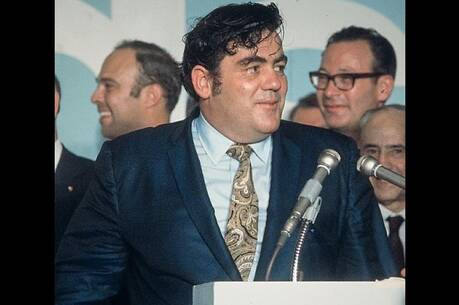A Priestly Vocation
John Weafer, first lay director of the Irish bishops’ Council for Research and Development, weaves narrative threads of three generations of diocesan priests, ordained in the 1950s and 60’s, the 70s and 80s, and the 90s and 2000s. Through “conversations with a purpose,” they reflect on their lives from seminary days to the present as curates, parish priests or retirees. Three qualitative questions shaped the study: How do Irish diocesan priests 1) understand and experience celibacy in their daily lives, 2) negotiate their priesthood within a complex organization (the Irish Catholic Church) and 3) understand their priesthood and how this understanding has changed over time?
The author’s Irish syntheses compare closely with 40 years of American research results, reported in Same Call, Different Men: The Evolution of the Priesthood Since Vatican II, by Mary L. Gautier, Paul M. Perl and Stephen J. Fichter. The texts deserve side-by-side reading. Readers may predict but will be unsettled by the intimacy of individuals’ responses—priests being “bullied” by pastors and bishops or remaining in the priesthood as a long-term, loving, “sexually active celibate.”
Weafer “created a space in the interview process, which invited the participants to discuss their experience of celibacy (and obedience and identity) at whatever level of intimacy they felt comfortable.” His book is a bricolage of heartfelt, insightful disclosures about the priestly vocation. The comparisons across generations illuminate the conflicts generated by changing political and economic values in Irish society as it clashes with an insistence on continuity and certainty by people still in the pews, some priests and recent popes.
My empathy has never been higher for priests’ life stories—as a person with a 50-year vocation to the academic life as an interdisciplinary psychologist and as a lifetime marital partner. They bear witness to a resilient courage and a nuanced faith. Weafer’s deft use of their own words will enable readers to say: “I know someone like that, respect so deeply what he does, although I don’t know how or why,” or, “I wish I might have encountered someone that authentic in his own skin when I needed it most.”
Melchizedek and St. Patrick
I imagined Weafer’s findings to mirror the iconic figures of Melchizedek and Saint Patrick. Their kingly righteousness and rugged pastoral ideals, respectively, suggest the competing rubrics for a priestly vocational identity narrated by these 33 good men.
The article on holy orders in the Catechism of the Catholic Church teaches that the priesthood of the Old Covenant, prefigured in Melchizedek (Gn 14:18-20 and Ps 110:4), finds its fulfillment in Christ Jesus, as the mediator between God and men.
In contrast to folklore accounts, in the fifth century St. Patrick composed his “Confession” reflecting his evangelistic work, a pastor-bishop’s life-narrative.
I was like a stone that lies in deep mud, and he who is mighty came and in his compassion raised me up and exalted me very high and placed me on top of the wall...serving faithfully with fear and reverence and without complaint that nation to which the love of Christ carried me, and he granted that, if I were to be worthy, I should at last do them good service during my lifetime with humility and sincerity...so as to leave after my death a legacy to my brothers and my children whom I have baptized in the Lord. This is my Confession before I die.
Weafer’s pre-Vatican II cohort could identify with Melchizedek’s “cultic priesthood”: set apart, focusing on sacramental obligations, teaching the faith and accepting church hierarchy just as their filled congregations publicly obeyed the certainties of rules and rubrics. Orthodox theology, learned during monastic-like seminary training, went well with the legalistic Irish culture. Now older in mind and body, they felt celibacy ought to be optional, were unsure about women as priests, but thought that both topics deserved open discussion. After listening to so many troubles for so many years, they espoused a pragmatic pastoral approach.
The Second Vatican Council stimulated a shift toward St. Patrick’s “servant-leader priesthood.” The sacraments became teaching moments for pastoral service, inspiring creative liturgical practices. It was a time to challenge long-held assumptions about hierarchy and certainty. “Men of the cloth” transitioned to being “company men, with attitude.” Making moral choices took into account individual consciences. These priests felt celibacy ought to be optional and favored the possibility of ordaining women.
St. John Paul II inspired the revival of a “neo-orthodox priesthood.” The model fostered men again set apart, valuing church authority, cherishing formal liturgical rituals and embracing a sense of duty as defenders and restorers of traditional theological and moral positions. Celibacy is a defining, countercultural feature of their priesthood. They do not favor the ordination of women. Although identification with orthodoxy may be paramount, like both older colleague generations, they confessed a pragmatic and pastoral approach to priestly service.
Weafer concludes: “The Catholic Church has, for the moment at least, lost its absolute symbolic power, whereby it was able to construct a reality that was readily acceptable by the laity.” All three generations of the priests live with profound sorrow for the many children abused by other priests and are often conflicted about how best to express outrage toward the co-conspirators of silence who failed them.
Seminary did not teach the emotional complexities of human development, but rather to be “rugged men for a rugged life,” “lone rangers,” chosen as a “call by God,” then awaiting the effects of “the gift of celibacy.” How does someone live a “king of righteousness” Melchizedek vocation and be true to Patrick’s “good service...with humility and sincerity”? Intergenerational priorities make daily life difficult: priesthood is “not the call of a social worker” (curate, 2000s) versus “my own curate has more vestments than God” (parish priest, 1970s). “The sense of church that was promoted over the years, to pay up, pray up and shut up, is still a good description of how the church operates. I am really disappointed with the failure of Vatican II, it just hasn’t happened” (parish priest, 1980s). Some felt support by their “band of brothers,” especially those who self-reported as being gay. In the 2012 American study, loneliness was the primary source of unhappiness and a felt lack of accomplishment from using one’s strengths was a close second.
Weafer finishes with: “I was left with the impression that their deep, personal commitment to priesthood has energized and sustained most of them in times of personal difficulties and societal challenges.... They believe they have been called by God to be priests, and for most of them, it is probably the best job in the world.”
This article also appeared in print, under the headline “A Priestly Vocation,” in the September 14, 2015, issue.








